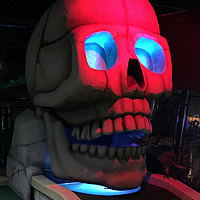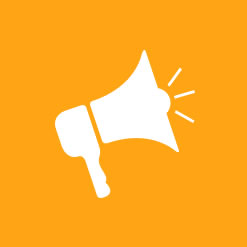ARTICLES
THE IMPORTANCE OF USER EXPERIENCE (UX)
The Importance of UX in Amusement Design
User experience (UX) refers to a person’s attitudes and emotions towards a particular product or service. It includes many aspects of the interaction between the system and its users such as the users’ perceptions of the system’s ease of use, efficiency and usefulness. UX is therefore a subjective, dynamic quantity that depends on the system as well as the context of its usage.
The titles of books on UX design often contain words like “emotional” and “playful,” illustrating the emphasis designers place on these concepts. Designers want their products to place highly on the hierarchy of needs, meaning they should do more than simply perform a function in a reliable and productive manner. UX design is therefore important in the amusement industry, since its primary purpose is to entertain its guests. The benefits of UX in amusement design include improved interactivity, customer focus and accessibility.
The large players in the industry spend a lot of time implementing UX principles into their new attractions, but amusement businesses of any size can learn from their example. The hope is that as guests make a stronger connection with a game, ride or show, they are more likely to return or refer the business to others.
Design Experts
Like other industrial sectors, contractors are increasingly likely to perform UX design in the amusement industry. A large chain may still retain an in-house design team, but most small and medium businesses now outsource their design work.
By hiring out the work, the business is able to bring in a specialist that knows exactly how a specific attraction should be set up to best please clients. This saves time and energy, allowing the owners to free up their time and focus on the daily management of their employees and guests.
Interactivity
The amusement industry is always introducing taller and faster rides, but the strongest trend today is towards greater interactivity. Guests of The Wizarding World of Harry Potter at Universal Studios Hollywood get an immersive experience at Diagon Alley and Hogsmeade with new interactive wands. The shops that sell these wands make extensive use of UX design, making it one of the most popular areas of the park.
Interactive shooting dark rides became popular during the early 2000s, increasing the need for UX design in amusement parks. Wet‘n’Wild Las Vegas introduced 'Slideboarding' in 2015, which allows riders to touch targets on their way down this waterslide. Wonderland in Canada added Wonder Mountain’s Guardian in 2014, which features the longest interactive screen in the world. These additions take the guest out of their element and make the attraction appeal to as many senses as possible.
The same principles apply on a smaller scale. Whether a full-scale amusement park or a family fun center, business owners need to contemplate how their new attractions are going to compete with a world of distractions.
Accessibility
Increasing accessibility is a fundamental element of good UX design. This feature is vital in the amusement industry, since parks need to be accessible by as many people as possible. For example, Manta is an attraction at SeaWorld Orlando with a manta ray theme that includes a roller coaster with four inversions and many aquariums. However, many guests may not be willing or able to experience such a ride, so the park created separate queues for riders and non-riders. This design allows both types of guests to view the aquariums by effectively making Manta a walkthrough attraction for non-riders.
Even at family fun centers, attractions need to be designed for people of all sizes, ages and abilities. Ensuring maximum accessibility will help any new attraction reach its maximum potential.
Integration
Drawing customers in with an enticing new attraction is just step one. A great UX design will have a plan for continuing the client relationship. By offering incentives to the customers, a business get can get enough information to help draw them back for repeated visits. One example of this is having an app specifically devoted to a ride, attraction or business.
We are very excited to introduce a mini golf app to our customers in the US. Developed in the UK by an app development team in conjunction with Chris Richards (European Agent for Castle). We think the app will be of serious interest to owners of mini golf courses. The app becomes your app and is tailored to your courses, your branding and your holes. We can even provide the Castle Golf designs of your holes to personalize your app with hole graphics and bring these to life with animations. Not only does this makes the players experience interactive, but with the integrated loyalty system you will have the players coming back for more.









